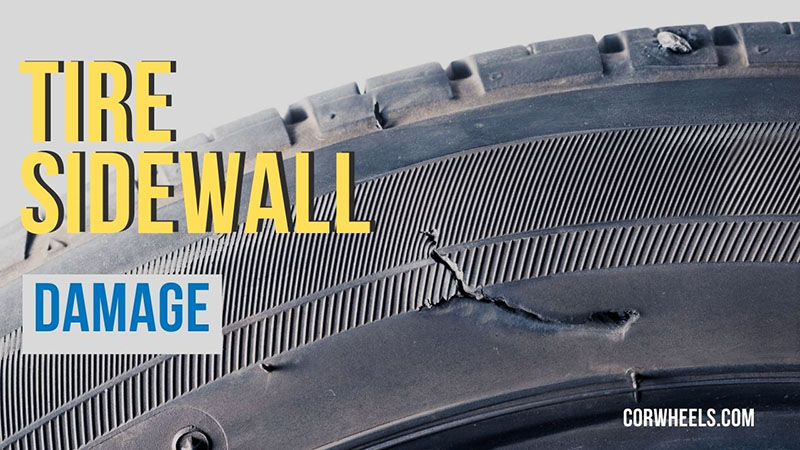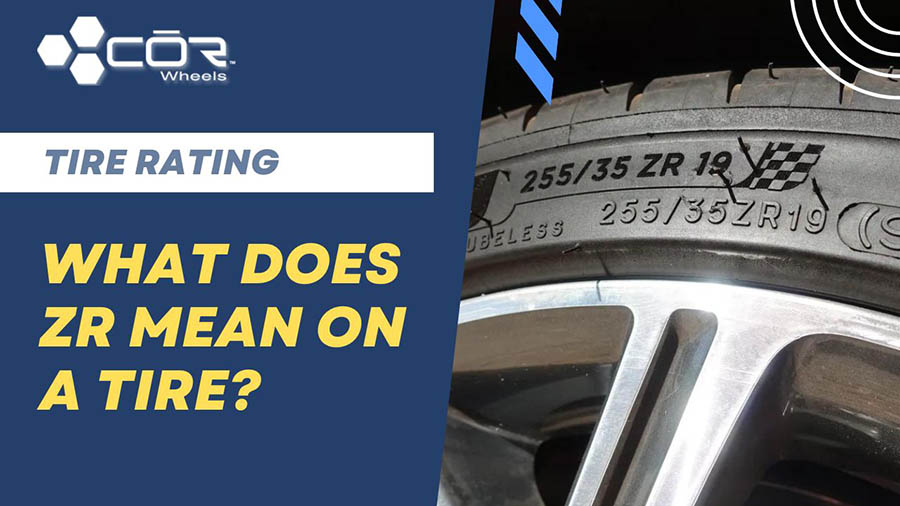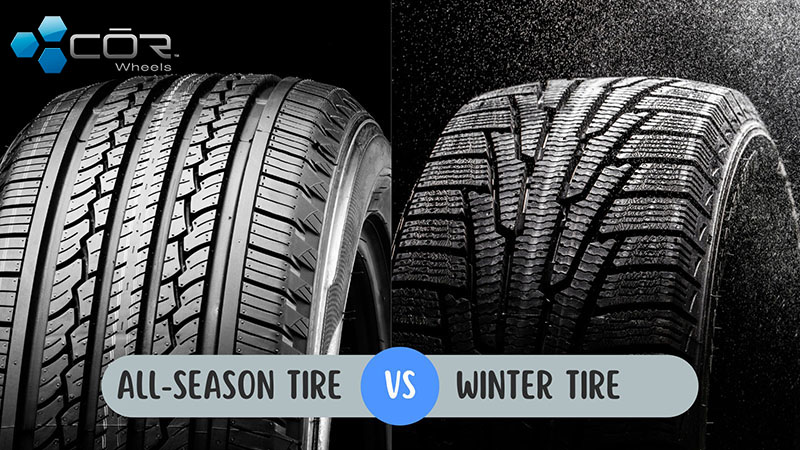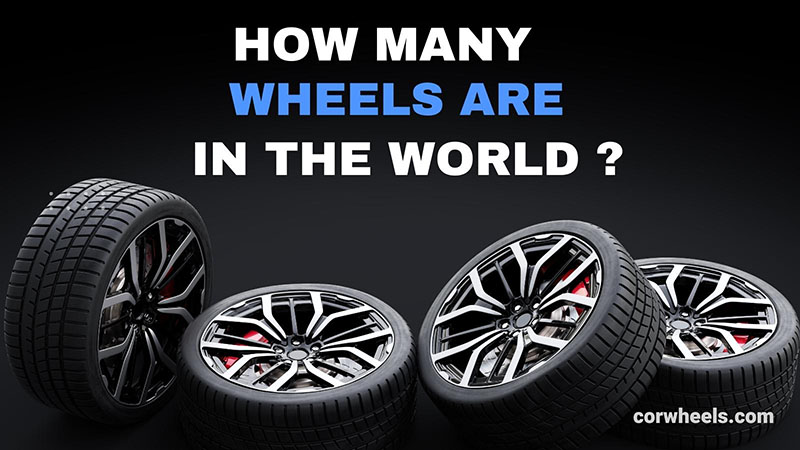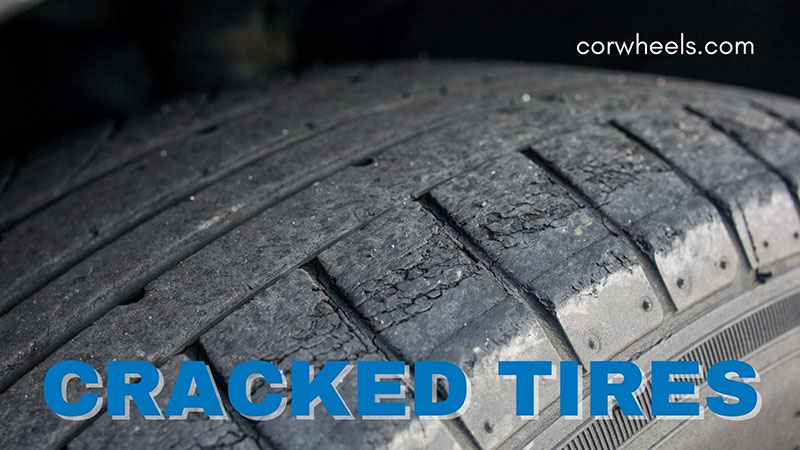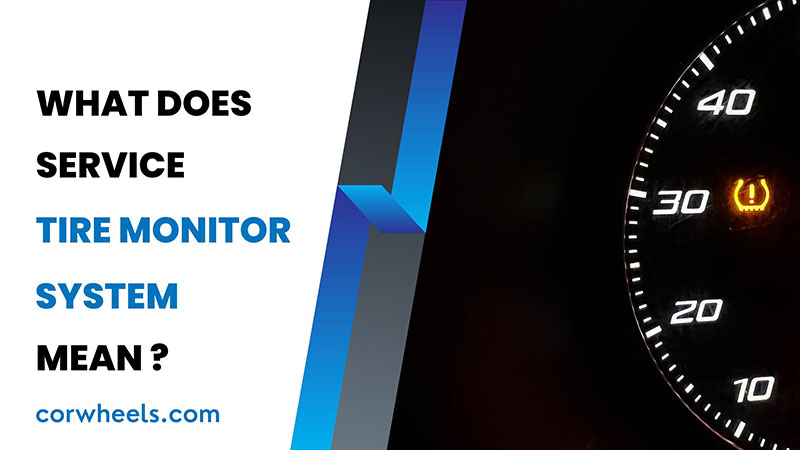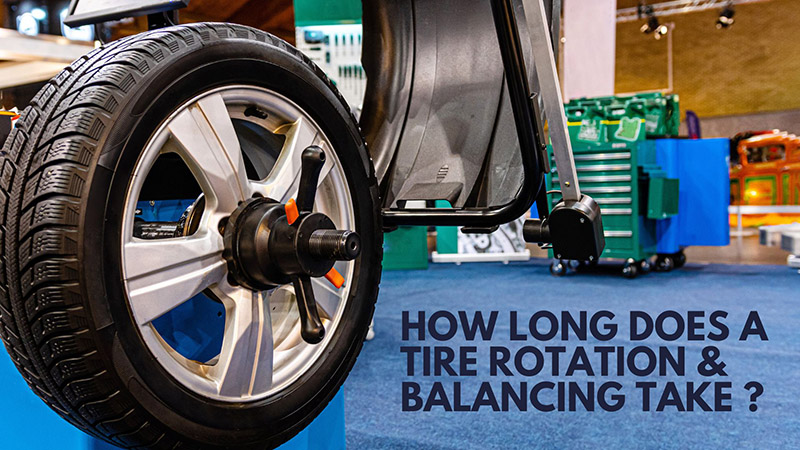A damaged tire sidewall is one of the worst scenarios for drivers, but unfortunately, it always happens. Depending on the condition, you can save it from death or pay for a replacement. The sooner you find out, the higher chance it is for a professional tire repair. Learn the signs of damage below to treat it right.
In this article:
What Is Damaged Sidewall? 6 Apparent Signs
A damaged sidewall includes all problems and defects on both the inside and outside of the part, resulting in a damaged tire. This deplorable condition consists of the following six main types of damage.
Scratches And Nicks
Scratches or cuts on the tire sidewall are often the first signs of damage. Depending on the impact, the shape and depth of the nicks vary from car to car. A layperson cannot judge the severity of this problem. When you notice scratches, bring them to the auto care center.
If the gash in the tire sidewall is not deep, it does not pose an immediate danger but bears the risk of poor performance over time. Whenever you encounter a deep slash, the carcass layer underneath the rubber may break down, causing a pressure leak.
Punctures
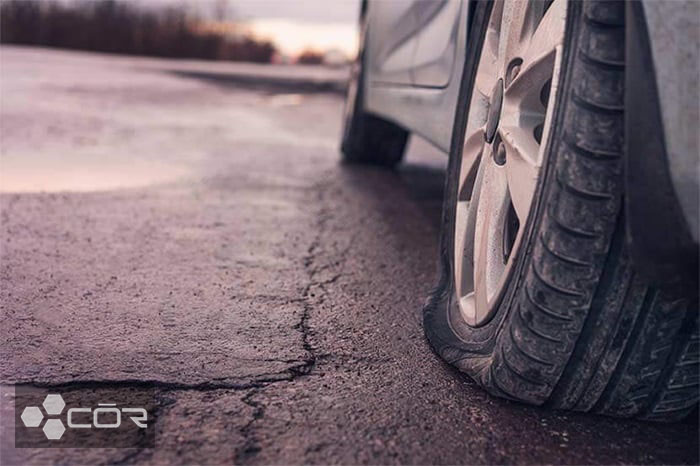
Gouges in tire sidewalls are a more serious consequence of cuts. The main cause of this condition is sharp objects piercing through the tread. The diameter of the hole is usually equivalent to the size of the puncture. To this end, tire patches cannot work on the sidewalls because they fail to prevent tire pressure from leaking.
Cracks
Cracks tend to litter all over the tire as it is near the end of their life. Though this condition starts as small incisions, it often concentrates in one area and gradually spreads over the surface.
Another trigger of cracks is direct exposure to the sun and ozone for a long time. Improper maintenance, for example, using strong detergents, also contributes to the degradation.
Abrasions
In simple terms, this implies the loss of rubber surface over a large area. Then the internal components come out of the tire. For example, you can see the inner cords, which determine the tire’s structure.
Bulges And Bubbles
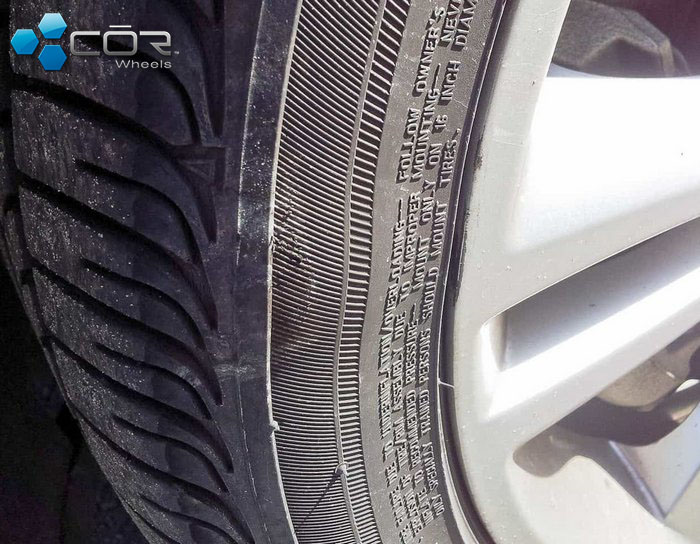
After an accident, your tire can suffer from an abnormal bulge. This means that the structure of the ply carcass has collapsed. As mentioned above, loss of pressure is inevitable. If you usually drive at high speed, the bubbles will explode, causing the vehicle to lose control.
Deformation
It is worth noting that this problem can happen to the inside, and you can’t check it with the naked eye. You can pick up on the unusual vibrations and get your car to a mechanic before it is too late.
The most difficult situation is that the tire undergoes slight deformation where the piles overlap. Any of the above causes, along with your ignorance or delay, lead to this bad outcome.
What Results In Sidewall Tire Damage?
There are two main causes for car chipping: the careless manners of drivers and the natural progression of the tire’s life cycle. In detail, the following factors deform its shape and deteriorate its performance.
Tire Ages
Tires are designed to be in direct contact with the road surface. However, no matter how advanced, these items do not last forever. Most manufacturers claim the elasticity and strength of their products can withstand 8-10 years from the date of manufacture.
Of course, natural conditions and unfavorable terrain can accelerate the aging process. As a result, the rubber compound becomes dry and brittle, which is the ideal condition for scratches and cracks to form. At the end of its life, the rubber peels off the tire sidewall.
Under-inflation
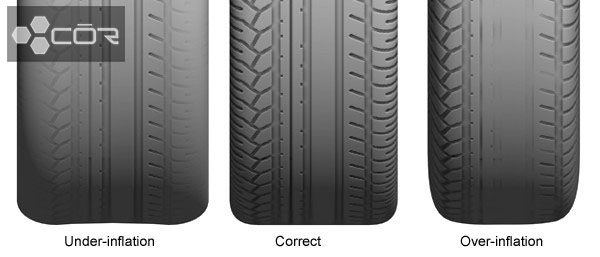
The correct tire pressure determines the shape of the tire. If you do not inflate your items properly, the treads and sidewalls must work hard to withstand the load. Over time, excessive stress builds up and leads to damage.
Note that tires deflate after a period of use, even when they operate in a normal environment or rest in your garage. Hence, check the air pressure regularly to prolong the tire life.
Factory Defects
Although uncommon, manufacturer defects sometimes interfere with optimal operation, especially on poor-quality items. The story behind these manufacturing flaws is the lack of necessary pre-launch tests.
Some tire manufacturers that do not focus on grade ratings thus issue inappropriate recommendations. When the customers follow these instructions, their items surpass the allowable limit and accumulate heat. Without a doubt, this condition takes a great toll on the sidewalls.
Overload
Like overspeeding, heavy loads also stress many components, such as suspension and tires. Heavyweight deforms the structure, and pressure accumulates in the lateral walls. As the vehicle moves, the friction generates heat, which blows up the tires.
Accidents
Hitting potholes, curbs, rocks, or any sharp objects is the recipe for tire sidewall damage. A strong force compresses the rubber padding and scratches or punctures the outer shell. Strong impacts even end up with an immediate explosion.
Can You Fix The Sidewall Damage?
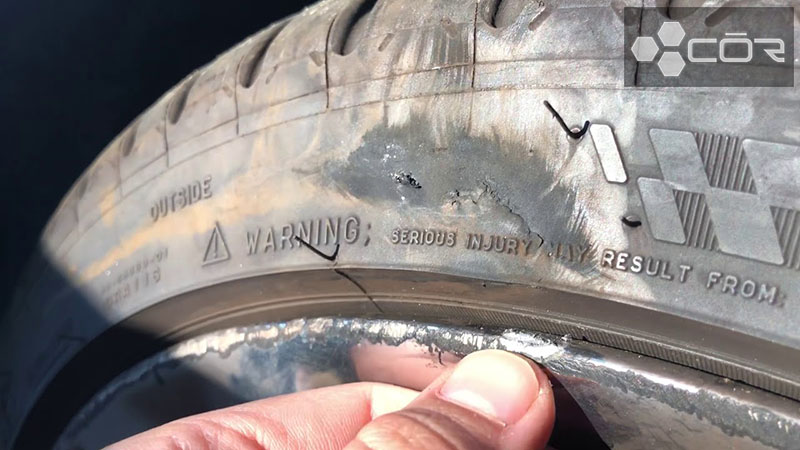
No, most cases stay beyond repair because the damage has already spread to the entire structure. The only hope is when the shallow scratches have not progressed to the inner cords.
Even when someone suggests a solution, it usually does not work in the long run. For example, car mechanics can patch your tread, but the sidewalls cannot return to their original stability. There is nothing more you can do when it comes to natural aging.
We recommend a tire replacement if you encounter the signs mentioned above. Though it costs a lot of money, it is safer for your vehicle and yourself.
Tips To Prevent Tire Sidewall Damage
You can do nothing with damaged parts, so take care of them to prevent bad scenarios. If you do not have an idea for your process yet, add the must-dos here:
- Perform a pressure test once a month. Best practice tools are a pressure gauge and a portable pump.
- Pay attention to road hazards. Mapping out a route before hitting the road doesn’t necessarily help you avoid potholes or obstacles, but it at least gives you a way around it. If possible, sidestep construction sites and be careful when pulling over.
- Follow the manufacturer’s recommended load and speed. These essentials are available on the tires – do not miss out!
- Schedule maintenance appointments periodically. While your home upkeep enhances operation, professional technicians have more experience diagnosing potential problems. An intensive routine is essential to strengthening the health of the tire.
FAQs
Is It Safe To Drive On A Damaged Sidewall?
Absolutely, NO. This sensitive part is more prone to damage than the treads. In many cases, the internal structure collapses and risks the driver.
How Much Is Tire Bead Damaged Too Much?
Once the cuts reveal the inner cords, it is time for a new item. Regarding punctures, the distance to the sidewall should be within 2 inches. For remaining signs, such as bubbles or deformation, replace them immediately.
Is Warranty Policy Cover Sidewall Damage?
Maybe. If the harmful factor is due to material or design, you are covered by insurance. However, driver faults do not stay in the policy’s coverage. It is best to check with the manufacturer for specific terms and conditions.
Are All Types Of Tyres Susceptible To Sidewall Damage?
YES. All tires will likely experience sidewall damage, but all-season options are more resistant.
Conclusion
Sidewall damage tires are dangerous and serious, but you can limit this poor condition with careful maintenance and driving manners. Regular checkups help you spot the early signs before it is no longer fixable. Only shallow cracks can be remedied, yet it is best to consult the mechanics.
See also:

